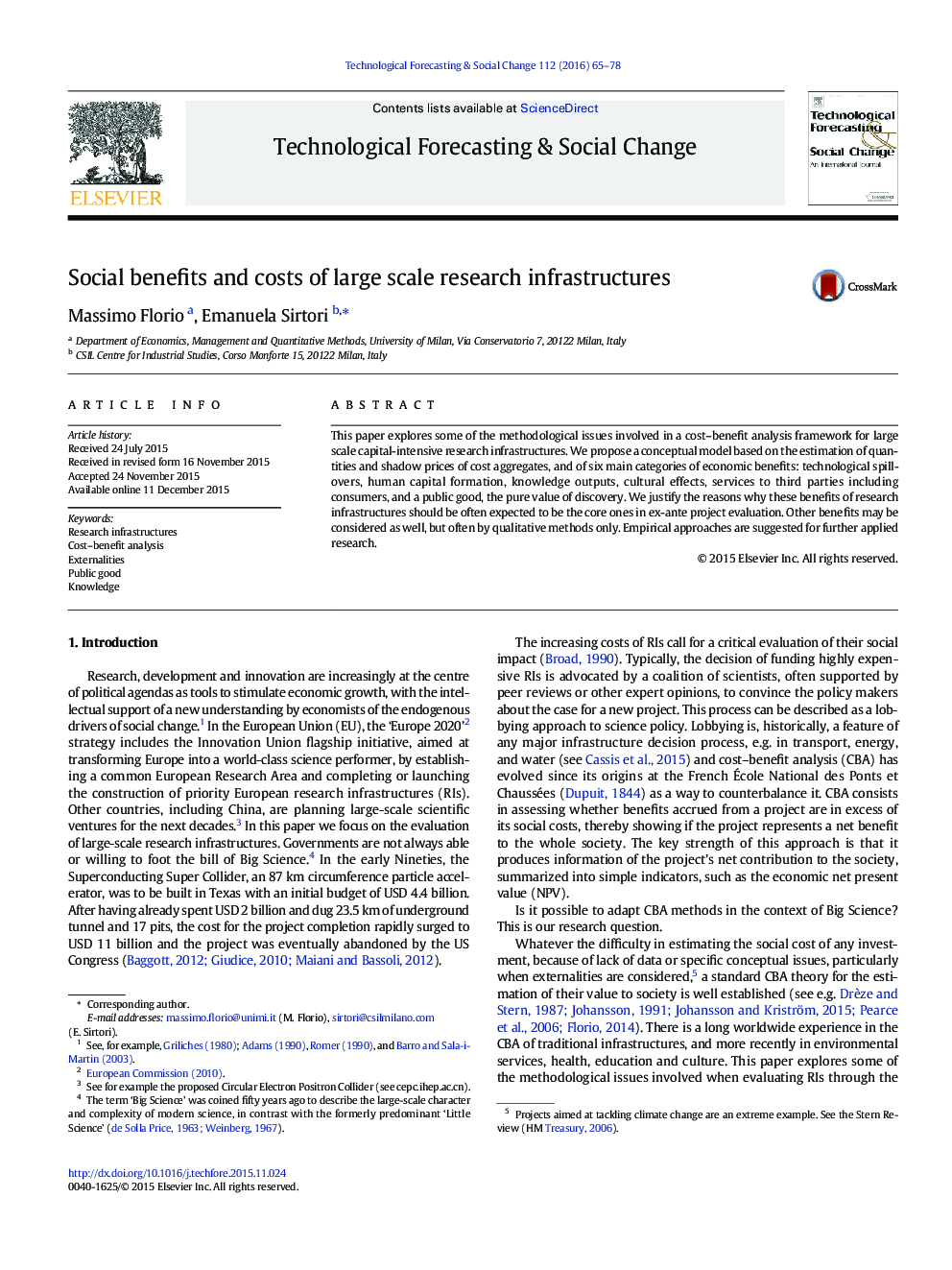| Article ID | Journal | Published Year | Pages | File Type |
|---|---|---|---|---|
| 5037217 | Technological Forecasting and Social Change | 2016 | 14 Pages |
â¢We propose a model to assess social costs and benefits of research infrastructures.â¢Benefits and costs are valued at the marginal production cost or willingness to pay.â¢Knowledge creation and diffusion can be valued with bibliometric techniques.â¢Some costs and benefits cancel out so that the RI in part pays for itself.â¢Contingent valuation can be used to value the social preferences for scientific discovery.
This paper explores some of the methodological issues involved in a cost-benefit analysis framework for large scale capital-intensive research infrastructures. We propose a conceptual model based on the estimation of quantities and shadow prices of cost aggregates, and of six main categories of economic benefits: technological spillovers, human capital formation, knowledge outputs, cultural effects, services to third parties including consumers, and a public good, the pure value of discovery. We justify the reasons why these benefits of research infrastructures should be often expected to be the core ones in ex-ante project evaluation. Other benefits may be considered as well, but often by qualitative methods only. Empirical approaches are suggested for further applied research.
